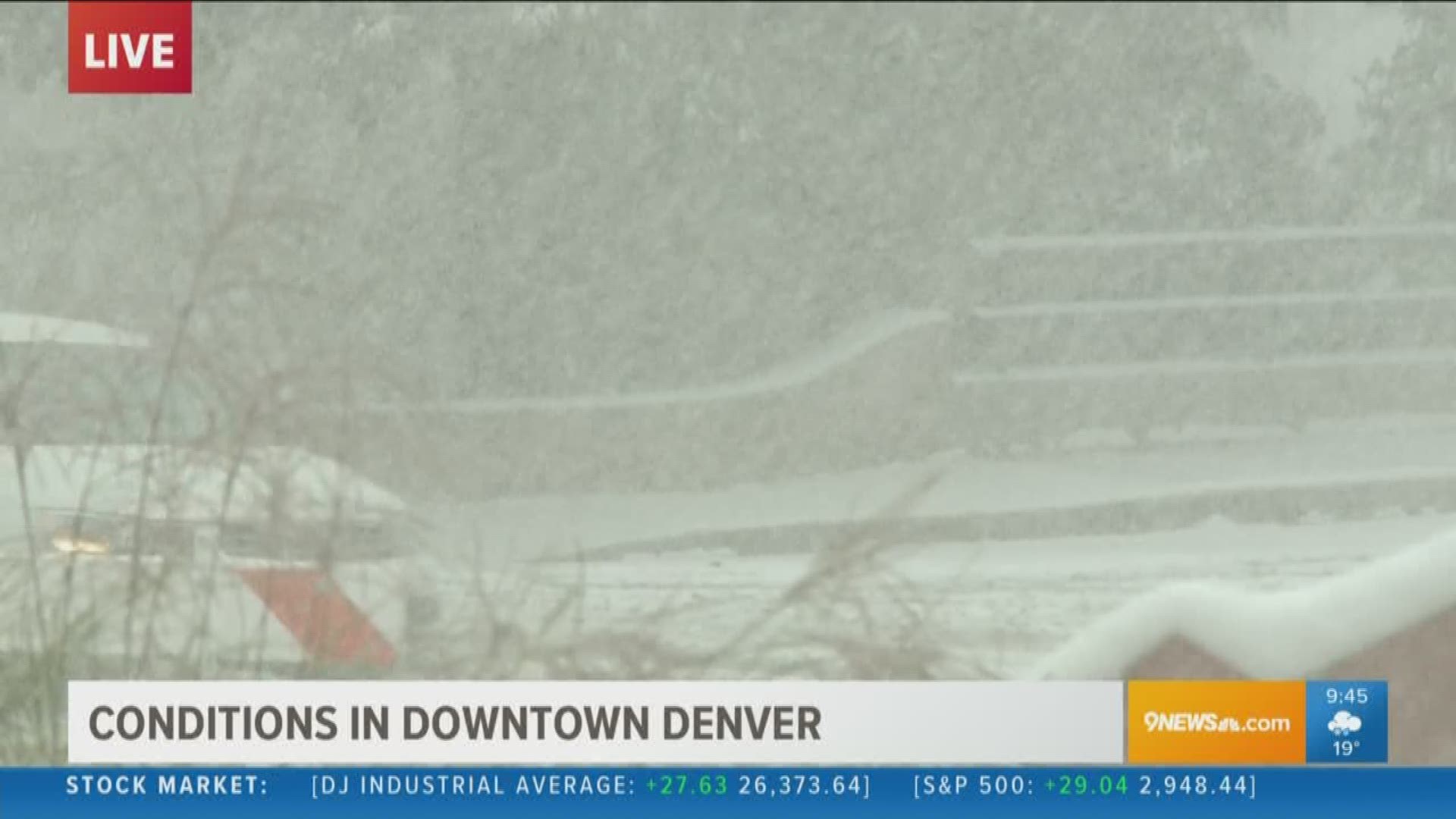COLORADO, USA — When snow falls in early October, trees are more susceptible to damage because many trees are covered with leaves which allows more snow to accumulate on them.
Homeowners who have downed trees should first assess the condition of the tree to avoid getting injured or damaging the tree further, according to the Colorado State Forest Service.
Before too much snow piles up on your trees, it's a good idea to head outside to remove snow and manage fallen trees and branches.
Tips for removing snow from trees:
- Be aware that accumulating snow, ice, or wind could cause limbs to break and fall at any time
- Check to make sure the tree is safe and clear of all utility lines prior to removing snow
- Do not attempt to shake snow off a tree if a utility line is going through its branches or is within contact distance
- If the tree is clear of utility lines, use a broom to remove as much snow as possible from branches by brushing off or gently shaking. Avoid large, rapid movement as this could cause the limb to break.
- Do now attempt to climb tree or use ladder to reach higher limbs
If it appears the tree has fallen on powerlines, it's best to leave it alone and wait for Xcel to come and clear it.
Here are some other tips for taking care of snow-damaged trees from the Colorado State Forest Service:
- Check for hazards. Before approaching the tree, make sure your surroundings are safe. Check for downed utility lines and avoid standing under broken or hanging branches.
- Contact city officials if necessary. Trees between the street and a city sidewalk may be the responsibility of city crews.
- Assess the damage. If a tree is healthy overall and still possesses its leader -- the main upward branch -- most of its major limbs and 50 percent or more of its crown, the chances are good for a complete recovery.
- Be careful knocking snow off branches. It might be tempting to just take a broom and whack at it, but this may cause branches to break. If you must remove snow, gently push up on branches from below to prevent adding additional stress.
- Remove broken branches. This minimizes the risk of decay and insects or diseases entering the wound on the tree. Prune at the branch collar -- the point where a branch joins a larger branch -- and be mindful of potential pent-up energy if the branch is twisted or bent.
- Don't over-prune. Trees may look unbalanced and uneven with damaged branches removed. Trees quickly grow new foliage that hides most bare areas.
- Don't try to do it all yourself. If the job requires running a chainsaw overhead, sawing from a ladder or removing large branches or entire trees, contact an insured, certified arborist. Professionals often are listed in the phone book under "tree services."
RELATED | BLOG | First Snow Watch 2019
SUGGESTED VIDEOS | Science is Cool

